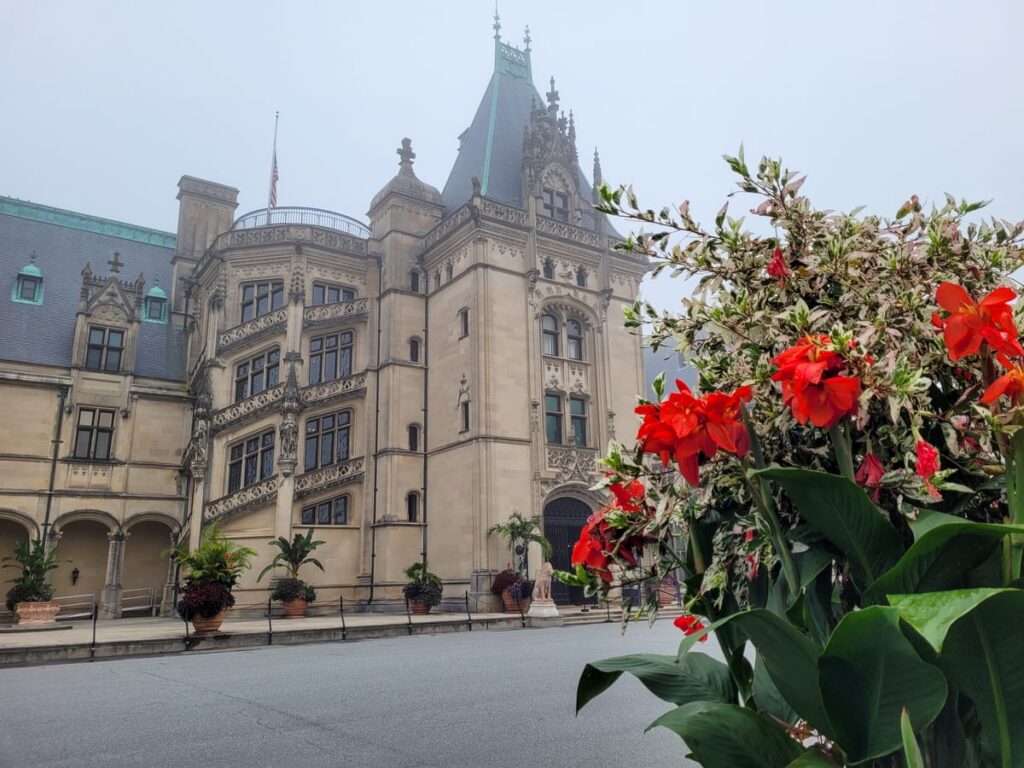
Biltmore Estate
The largest privately owned home in America may house a whole family of Vanderbilt specters
Paranormal Claims at
Biltmore Estate
- The apparitions of George and Edith Vanderbilt have been seen
- Voices can be heard conversing with each other
- Screams and laughs have been heard
- Shadow figures are seen throughout the mansion
- Footsteps are heard on the main staircase
- A headless orange cat ghost has been seen
- Uneasy feelings are reported in certain areas
- Night workers have reported the sounds of parties going on in the empty house
History of Biltmore Estate
In Asheville, North Carolina, the legacy of the historically wealthy Vanderbilt family spreads wide through local culture. From townships like Biltmore Village and Biltmore Forest to the nearby Pisgah National Forest. The Asheville region is full of reminders of the Vanderbilt’s fortune and influence.
And the crown jewel of that influential fortune stands proudly on an expansive piece of land at Asheville’s edge: The Biltmore Estate.
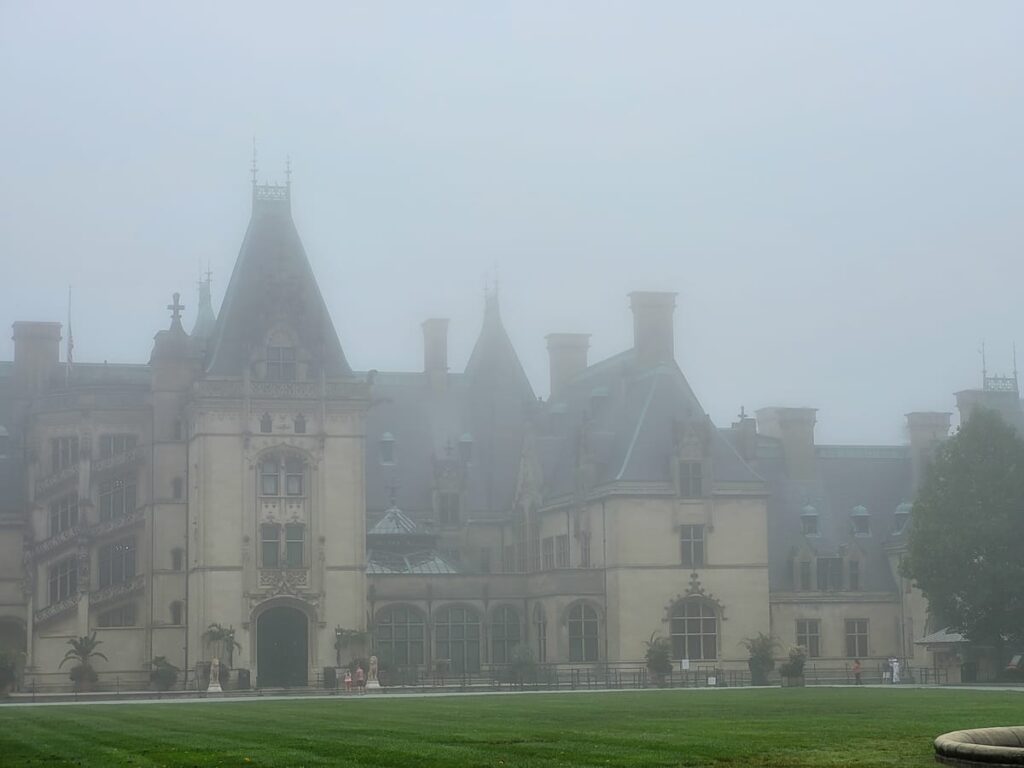

Still the largest privately owned home in the United States, The Biltmore has been a glowing example of Gilded Age extravagance and excess since the day it was built. The home, looking like a gilded English country home dropped into the eastern US, is now open to the public for tours and other programs.
And, as visitors have come and gone from the massive estate, some have claimed it is as haunted as it is large. From tales of specters roaming the halls to ghostly animals in the gardens, it seems ghost stories can be found just about anywhere on The Biltmore’s endless property.
Timeline of Biltmore Estate's History
Swipe or use timeline points to see Biltmore Estate through the years
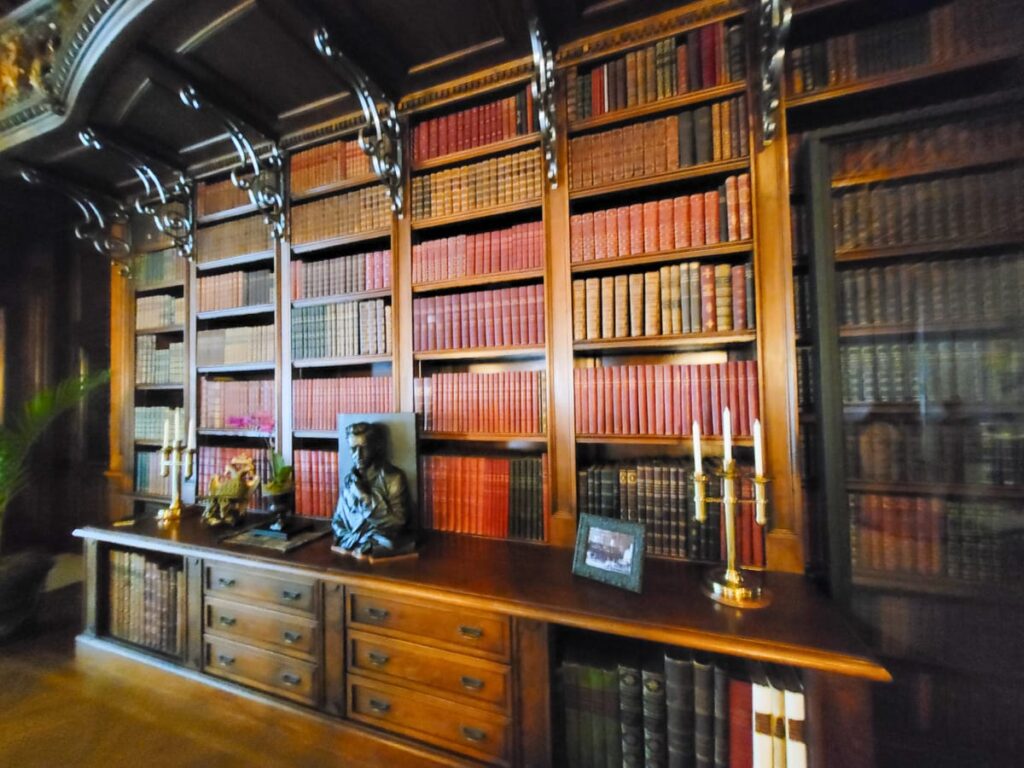
1888
In 1888, during a trip through the American South, George W. Vanderbilt, an heir of the Vanderbilt fortune, stopped in Asheville, North Carolina. There, he instantly fell in love with the scenery and natural beauty offered by the surrounding Blue Ridge Mountains and soon resolved to build a family getaway there.
To start, George bought 125,000 acres around Asheville and brought in a small town’s worth of workers to begin building his mansion. Construction on Vanderbilt’s French Renaissance chateau started the following year.

1895
Through six years of constant design and construction, The Biltmore Estate came to life. On Christmas Eve, 1895, George W. Vanderbilt finally opened his country retreat. When completed, the home included 35 bedrooms, 43 bathrooms, 65 fireplaces, and over four acres of floorspace. Along with the massive home itself, Vanderbilt had expansive gardens put in around it, devised by Frederick Law Olmsted, co-designer of Central Park in New York City.
While it was only one Vanderbilt property, George quickly settled on Biltmore as his favorite escape.

1898
In 1898, George Vanderbilt married Edith Stuyvesant, and the two moved into The Biltmore right after their honeymoon. Their only child, Cornelia Stuyvesant Vanderbilt, was born at The Biltmore Estate in 1900. And, with a new life and a new century, the Biltmore property received new features. A large horse barn and a dairy production building were built in the early 1900s.
The dairy went on to become the property’s most lucrative business enterprise.

1914
George Vanderbilt died in 1914, leaving Edith and young Cornelia to manage The Biltmore Estate. Shortly after, Edith sold 87,000 acres of Biltmore land at a low price for the purpose of conservation. The sold plot would soon become Pisgah National Forest, a preserve that today covers over 500,000 acres. In the years that followed, Cornelia grew into adulthood at Biltmore. She married at a local church in 1924, and had two children in the Louis XV Room of the mansion, born 1925 and 1928, respectively.

1930
In need of income to help manage the impossibly large estate, Cornelia opened The Biltmore Estate to the public in 1930. While public access helped bridge some financial gaps, the property would soon serve an even more important purpose. In 1942, with World War II raging overseas, The Biltmore served as a safe house for artwork from the National Gallery in Washington.
As the US feared a possible bombing raid on Washington, they sent the priceless pieces to Asheville for safekeeping until war’s end.

1963
The Biltmore Estate was recognized as a National Historic Landmark in 1963, preceding the National Register of Historic Places by three years. While the original designation came as a result of the property’s preservation of natural resources, the mansion’s history has since become a focal point of the property.
Since then, The Biltmore has continually expanded, adding guest houses, a winery, and a large inn. And as the property has grown, the mansion at the center of it all has become a hotbed of stories, both historical…and haunting.
Is Biltmore Estate Haunted?
For many years, people have reported numerous strange and unexplained happenings around The Biltmore Estate. Unsurprisingly, two of the most commonly encountered ghosts are George and Edith Vanderbilt.
Their apparitions have been seen wandering through the mansion’s many long corridors, still searching for each other. Additionally, George’s apparition is also known to appear in the home’s library – his favorite spot in the home.
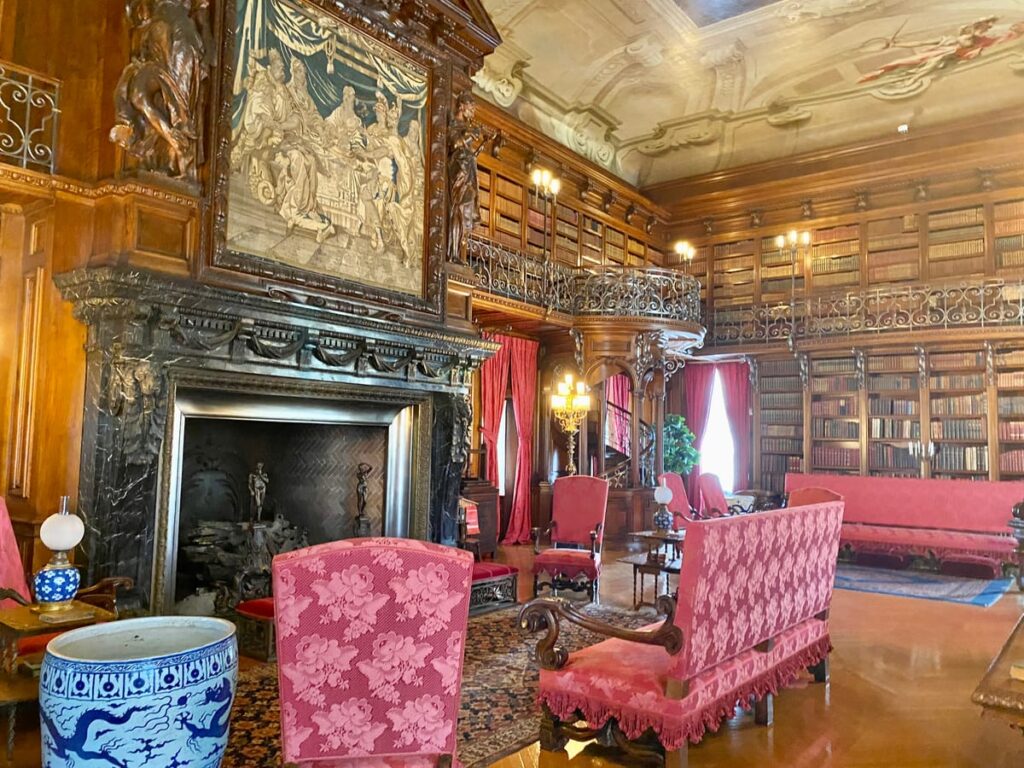


Voices have also been heard in the library. Witnesses say it sounds like two people conversing, with many figuring it to be the ghosts of George and Edith.
Additionally, a woman’s voice has been heard loudly calling for George in the library, presumed to be Edith on the hunt for her husband.

Spirits on the Staircase
The Asheville mansion’s main staircase is said to be a paranormal hotspot. While phantom footsteps have been reported through the house, they are most often heard around the main stairwell. Oddly, strange and unexplained smells as well as cold spots have also been reported around The Biltmore’s main staircase.
Additionally, some people have claimed to see shadow figures trotting up and down the steps, corresponding with the sounds of the footsteps. No one is sure what spirit in the house enjoys the stairs so much, or why.

Spectral Servants at Biltmore
The lower floor is also a hotspot, specifically the servants’ quarters. In the servants’ quarters, shadow figures have been seen moving quickly through the space and out to the kitchen.
A similar, dark misty figure has also been seen around the pool area. Perhaps phantom workers still making their rounds through the mansion?
Unexplained Cold Spots & Garden Ghosts
A lot of activity around the mansion isn’t tethered to a particular area. Strange, possibly ghostly smells are often encountered around the house. One well-known smell is that of cigar smoke, even though the mansion is now smoke-free.
Additionally, cold spots have been noted quite frequently by visitors to the home. This, despite the 65 fireplaces dotting the interior.
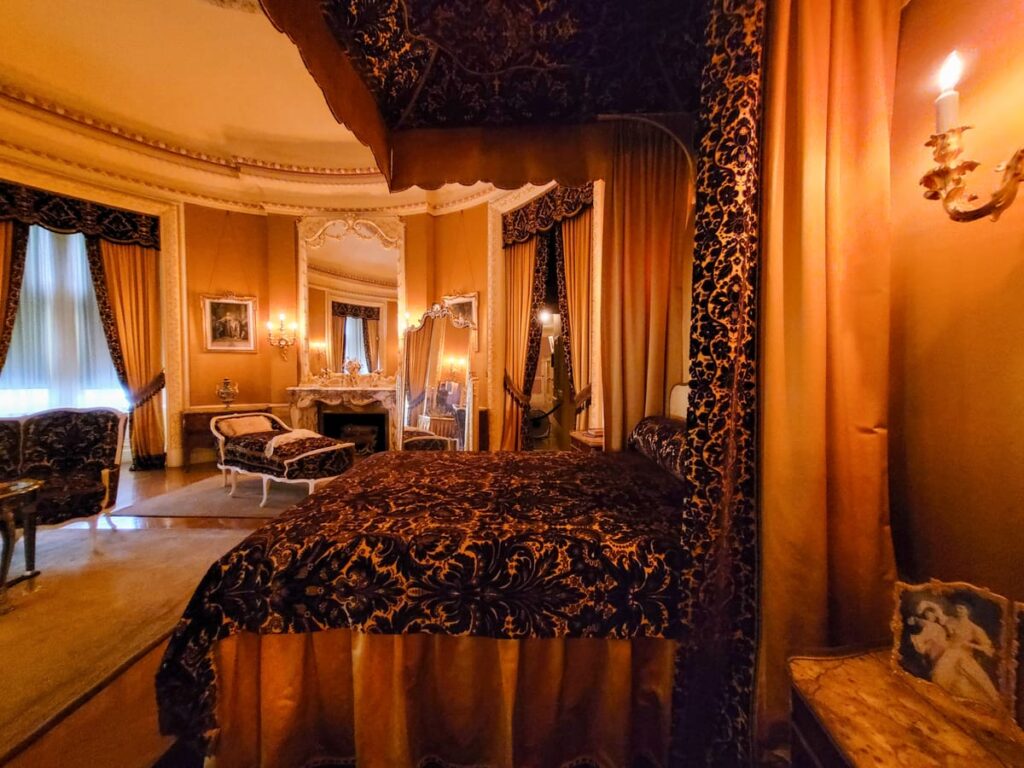



While most of The Biltmore Estate’s paranormal claims happen within the mansion itself, there are other ghosts reportedly lingering in the gardens. Some visitors have even seen a truly unique haunting: a headless cat. All the descriptions are roughly the same: a small orange cat is seen wandering, just like any other cat, but its spectral head is missing.
While many have seen this headless cat frolicking through the garden, no one has yet devised any theories as to where it came from or how it came to lose its head.
The Most Haunted House in Asheville, North Carolina
Though built as a private getaway for one of the nation’s wealthiest families, The Biltmore Estate has since evolved into an expansive array of publicly accessible luxuries, also including a popular winery and a large inn.
Additionally, the mansion itself hosts popular tours throughout the year of both the home and gardens.

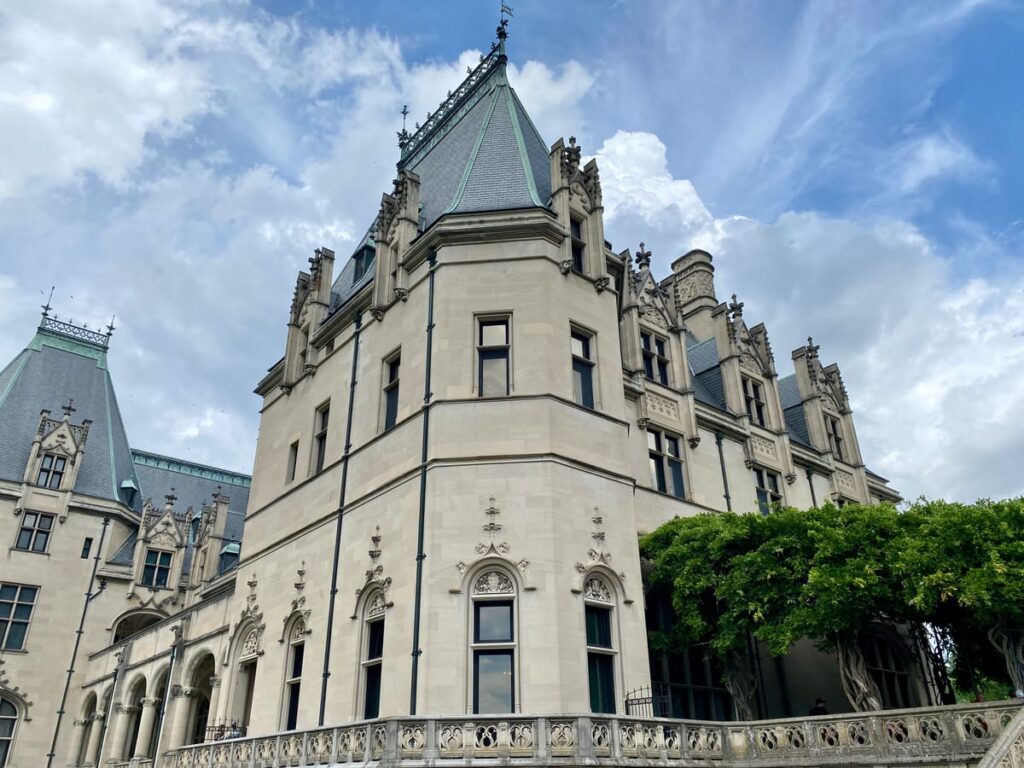
While you can’t book a ghost tour or investigation at the palatial mansion, you can certainly take in the sights and experiences on a tour, or a longer stay at the property’s inn.
Perhaps you might even spot George Vanderbilt’s ghost in the library, or at least hear Edith calling for him.



